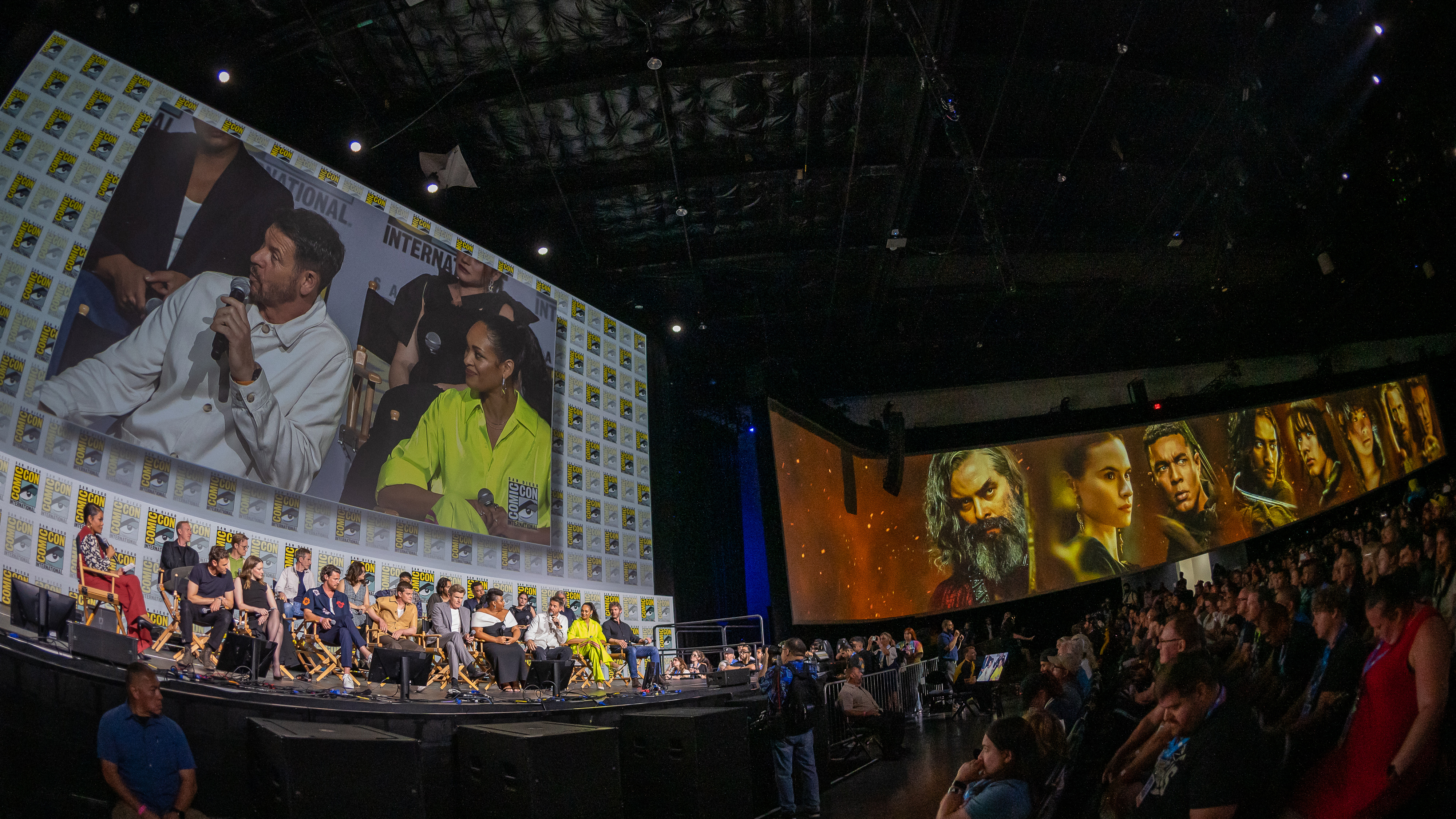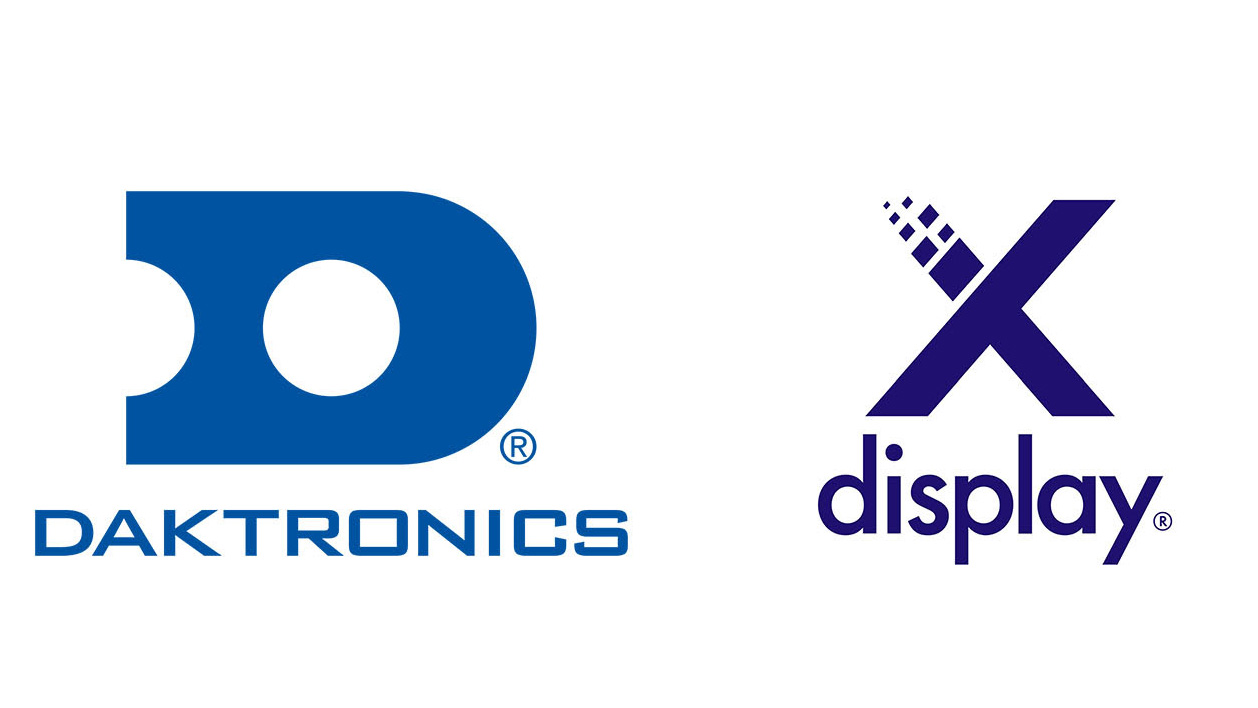Comic-Con Welcomes More Than 135,000 Guests with Super(hero) Sound from JBL
The LCR cinema system is three arrays of 10 JBL VTX A12 Dual 12-inch Line Array Loudspeakers.

2024 Comic-Con packed the San Diego Convention Center with well over 135,000 attendees eager to celebrate an entire culture devoted to all things to do with comics and popular arts. Aside from the presence of the various comics, toy, and book publishers and manufacturers, Comic-Con’s events represent one of the best opportunities that film and game studios get for directly reaching audiences and firing them up for their latest productions. To say the quality standard for video and audio at their events is set extremely high is an understatement. That's why Comic-Con has turned to JBL Professional speakers for several years to provide the high-quality sound needed for everything from panels to screenings.
As the non-profit Comic-Con has grown in size and prominence, the JBL sound systems used have grown in size and sophistication. For the last seven years, San Diego’s Show Imaging has provided these systems for Comic-Con’s major events.
Upwards of 6,000 fans pack into Hall H to see and hear panel discussions, clips of upcoming productions, and cast members. One of the big moments at 2024 Comic-Con was an exclusive screening of Marvel’s “Deadpool & Wolverine” a day after its world premiere.
[Avengers Assembled! 70 Genelec Loudspeakers Power Marvel Exhibition]
But the demands of the event pose challenges and complexities, and Hall H itself adds yet another series of hurdles to overcome. Show Imaging marshaled a substantial arsenal of loudspeakers to get the job done. Hall H presentations commonly involve two types of sound content. First, there is spoken word, such as interviews and commentary, which requires high intelligibility mono sound evenly covering the room. Second, there are soundtracks, which require very dynamic and immersive multichannel delivery.

“A major challenge of this event is that you have to have a cinema system with a traditional LCR behind the perforated screen for playback, but then you have to deal with panelists and people talking on stage in front of the screen, which obviously you can't put in the cinema system without causing feedback,” explained Elliot Carroll, Show Imaging ‘s director of audio services. “So, there's a cinema system and then a separate corporate system, with speakers that are outside of the screen.”
The LCR cinema system is three arrays of 10 JBL VTX A12 Dual 12-inch Line Array Loudspeakers. Surround content plays through 12 arrays of five VTX A6 Sub-compact Dual 6.5-Inch Line Array. LFE signals play though a dozen VTX B28 Arrayable Dual-18-inch Subwoofers on either side of the stage, plus a center array of eight B18 Arrayable Single 18-inch Subwoofers.
A daily selection of features, industry news, and analysis for AV/IT professionals. Sign up below.
[Wireless Microphone Headaches]
The surround speakers, hung above the video walls running down each side of the hall, are suspended from custom trusses designed and built by Show Imaging’s custom fabrication department.
The basic corporate system is two arrays of 11 VTX A8 Dual 8-inch Compact Line Array Loudspeakers, plus a flown center fill of two arrays with six A8 cabinets. Four delay arrays of six A12 cabinets plus two VTX A12W (wide coverage angle) cabinets on the bottom fly between supplemental video screens for the rear of the room. An array of six A8 cabinets covers the very furthest reach of the room. The SRX712M 12-inch Two-Way Stage Monitors are used onstage.
The situation becomes more challenging with the need to integrate these separate systems in order to deliver proper coverage to the room for both kinds of sources, and this is where scale comes into play. “The room's so big you need to use delay speakers, so you have to mix the cinema and corporate systems together for the people hearing the delay speakers,” explained Carroll, “and this gets further complicated by having six sets of surround speakers on each side, which we've added in recent years. You end up trying to mix it all in, knowing you’re not in a nice, compact movie theater where everyone can hear every speaker.” Of course, combining signals is not all that is involved in integrating the two systems. Levels must be balanced between them, too.
But it gets even harder. Not only is Hall H far more capacious than any movie theater, it is also asymmetrical, in fact, it has a highly irregular pentagonal shape, which creates complications literally from every angle, from simply delivering clear mono coverage to the farthest-field areas, to delay synchronization that is different on each side of the room AND different for the cinema and corporate systems.
A seat in the middle or rear of the room might be receiving a delayed signal from the corporate system mixed with delayed LCR signals from the cinema system, plus signals from surround speakers. And there’s yet another major factor to consider. “The distances and resulting time differences between arrays at this scale isn't a few milliseconds, it's more like 60 milliseconds. So, you really have to adapt,” said Eric Stahlhammer, who has mixed Comic-Con events in Hall H since 2012. In 2018, Stahlhammer joined the staff of HARMAN (under which JBL Professional is a brand), where he is currently senior global product manager for Professional Audio Hardware, DSP, and Software, but he still works Comic-Con every year to keep his hand in on real field work.
“The game changer this year was JBL’s Venue Synthesis software," said Stahlhammer. "The key thing with Venue Synthesis is being able to see the coverage of everything in a 3D space, because you can see what the system is doing as a whole. When we're tuning, we're just confirming what we already think is going to happen because we can see it in the software. It takes out some of the guesswork and shortens the tuning time. Having Hall H drawn up in Venue Synthesis was helpful to us dialing in the new delay hangs and the surrounds much, much faster than we were able to do in the past. That was huge because it gained us time back onsite.”
Actual implementation of the delays is done with a delay matrix that allows each feed to be appropriately delayed before signals are combined and distributed. And after all the elaborate calculation and implementation is said and done? “It works really well,” proclaimed Stahlhammer. “When it's timed right and tuned right, the match between the cinema and corporate systems in sound quality, imaging, and level at a given seat is exceptional.”
[Check out the Annual SCN Audio Issue]
JBL Professional tools, properly applied, created a path to success. “The big thing for us is that having tools like Venue Synthesis gives us a more accurate picture of how to redesign the system, as we did this year, to help elevate the fan experience. That's the goal. We work closely with the studios and craft these technical solutions, but at the end of the day, we want the fans to walk away just wild, right?” concluded Carroll.
The AVNetwork staff are storytellers focused on the professional audiovisual and technology industry. Their mission is to keep readers up-to-date on the latest AV/IT industry and product news, emerging trends, and inspiring installations.
